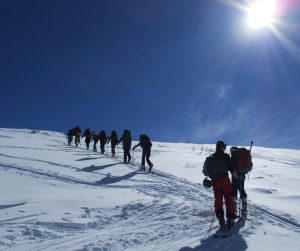Advancing Solar in the Roaring Fork Valley
This piece is written by Catherine Lutz, on behalf of Aspen Skiing Company. To view the original piece, visit their Inside Aspen Snowmass blog.
When a 147-kilowatt solar array was installed on the Colorado Rocky Mountain School (CRMS) campus in Carbondale in 2008, it was the largest solar array on Colorado’s western slope.
The solar industry has come a long way since then — the CRMS array is nowhere near the largest of the many arrays now dotting western Colorado, including the Roaring Fork Valley — but it’s important to place the project in the context of the times to understand how pioneering it actually was.
The idea began when officials from the town of Carbondale and local nonprofit Community Office for Resource Efficiency (CORE) contacted CRMS, eyeing the private high school’s sprawling 320-acre campus as an ideal place to expand the town’s renewable energy portfolio. But enthusiasm for the project didn’t match its viability — and a private-sector, taxpaying partner was needed to help with the high cost of the system and to be able to take advantage of the tax credits and tax benefits available to such an undertaking.
Enter Aspen Skiing Company.
In 2004, Aspen Skiing Company had built the first solar array in the ski industry, a 2.3-kilowatt set of panels on its then-new ski patrol headquarters atop Aspen Highlands. With a focus on sustainable efforts and green operations, the company also operates solar projects at The Little Nell Hotel and an employee housing complex in Carbondale.
But the CRMS project wasn’t a slam dunk. Garfield County’s zoning didn’t allow for solar, meaning a months-long land-use process involving attorneys to rezone the land (and thus pave the way for future projects). In the end, the company’s ownership saw the value of investing $1.1 million into a solar array that it would own and operate for 20 years, selling power to CRMS and the excess to Xcel Energy, the local energy provider, for an approximately 6% return.
“It was the first time we said, ‘Let’s really throw some money at clean energy,’” says Auden Schendler, Vice President of Sustainability for Aspen Skiing Company, who has spearheaded most of the company’s green projects. “I’ve always felt that if we wanted to pursue any level of sustainability, we have to answer the power piece of that equation. And if you look at our work over the last 20 years, we’ve kept trying to figure that out.”
Schendler describes how the company started out by doing small projects, like the Highlands solar array, and building gradually in both scope and investment, up to a $5.5 million coal mine methane plant that produces enough carbon-negative energy from waste methane gas to power 2,000 homes.
“Maybe our next project will be $30 million,” he quips.
After 20 years, ownership of the solar array will pass to CRMS, which will then see the benefit of generating its own power.
An environmentally progressive school, CRMS had long taught and experimented with solar energy, building its pioneering solar dorm in the 1970s. The solar array fits with the school’s mission, and it serves as a concrete, on-site educational tool — both about renewable energy and long-term thinking in that regard.
“Even though the project increases the school’s electricity costs at first, it will be an economic benefit over time,” says CRMS Finance Director Joe White. “Students understand that making a financial sacrifice now for a benefit that won’t be seen for 20 years, if it’s the right thing to do, it makes sense.”
Like Aspen Skiing Company, CRMS is also treating the solar array as a building block. Since the array’s installation, the school has expanded the facilities that are tied to its meter, with an eye toward expanding its agricultural program to run pumps off the array, says White.
“We like the idea of incorporating renewable energy, land stewardship, and local ag production in a real-world project students can get involved in and see how they interrelate,” says White. “When you can hit a bunch of really neat things like that with one project, it’s fun.”
 MYCRMS
MYCRMS





 Virtual Tour
Virtual Tour

